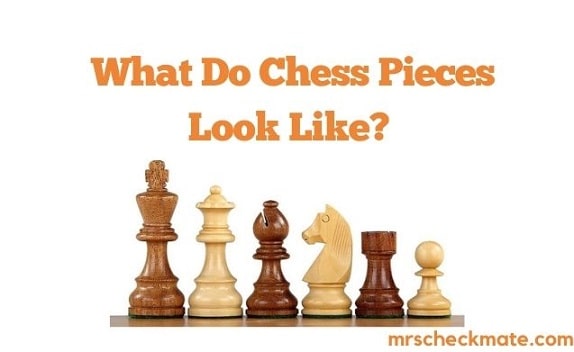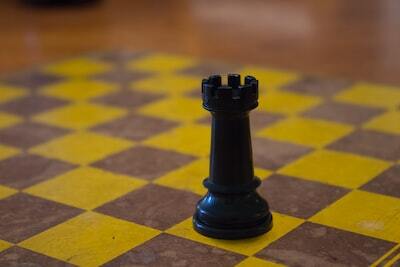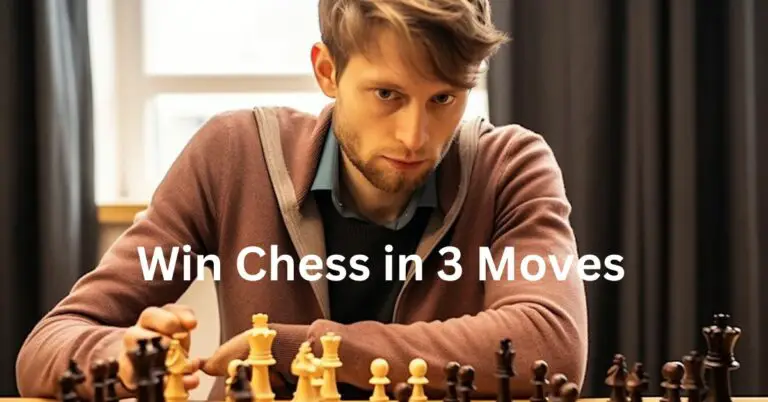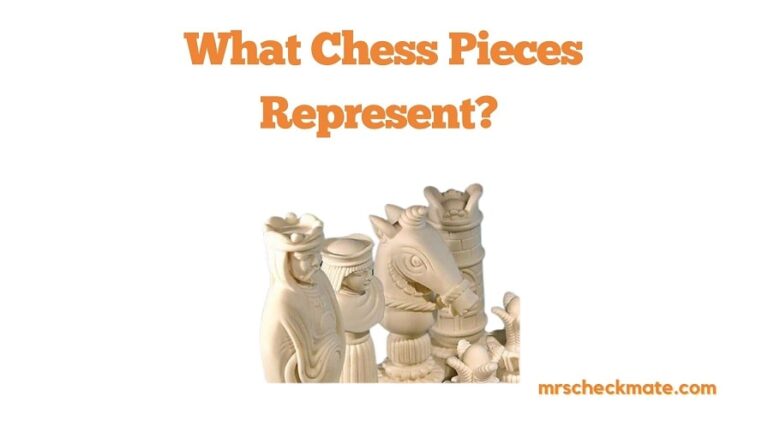What is the Objective of Chess? (Explained)
Listen to this article
Chess, often referred to as the “Game of Kings,” is deeply rooted in ancient civilizations, evolving over countless ages into the strategic marvel we relish today. Across a board of 64 squares, with each uniquely purposed piece, the game transcends mere competition.
It symbolizes profound warfare, meticulous strategy, and the boundless depth of human intellect. Delving into its objectives isn’t a mere pastime; it’s a passionate quest. As we journey through this exploration, we’ll unveil not just the pivotal aim of checkmate but also the myriad nuances that bestow upon chess its unparalleled intricacy.
Step into a realm where every decision, every move, narrates a tale of strategy and foresight.
The Primary Objective of Chess
At its core, chess is a tantalizing dance of strategy, intellect, and foresight. While there are multiple facets to consider during gameplay, the paramount goal remains constant: achieving checkmate.
Explanation of Checkmate and Its Role as the Main Objective
Checkmate occurs when a king is placed in a position to be captured (in “check”), and there is no legal move that player can make to remove the king from attack. When this situation arises, the game concludes immediately. It’s the ultimate triumph, signaling not just the end of a game, but the culmination of tactics, risks, and calculated moves that led to that pivotal moment. In essence, the entire game orbits around this crucial objective, making it the heart of chess strategy.
Description of How to Achieve Checkmate
Achieving checkmate can be both an art and a science. While there are infinite ways a game can unfold, here are some fundamental pointers:
- Control the Center: Dominating the central squares (d4, d5, e4, e5) allows greater mobility for your pieces and can put pressure on your opponent. The importance of the center is well elaborated in our guide on pawn strategy.
- Use All Your Pieces: Often, beginners focus solely on a few pieces, neglecting the potential of their entire army. Understand what each chess piece represents to harness their full power.
- Set Traps: While being direct can be effective, sometimes laying a subtle trap for your opponent can lead to a swift checkmate. The knight, with its unique movement, is a potent piece for such tactics.
- Protect Your King: Always ensure your king’s safety. Familiarize yourself with defensive strategies like castling.
While understanding the paths to checkmate is pivotal, grasping the objective of chess in its entirety necessitates a holistic approach to the game, encompassing both offense and defense, strategy and tactics.
Secondary Objectives in Chess
While the primary aim of chess revolves around the crucial endgame of checkmate, success often hinges on a series of secondary objectives. These objectives not only shape the flow of the game but also lay the groundwork for that ultimate checkmating move. By understanding and mastering these, a player can effectively control the game, setting the pace and tone of the match.
Importance of Center Control
The center of the chessboard, comprising squares like d4, d5, e4, and e5, is the epicenter of action. Controlling this region provides several advantages:
- Mobility: Central dominance allows your pieces, especially knights and bishops, to access a larger portion of the board.
- Offensive Launchpad: A stronghold in the center can be the starting point for launching attacks on the opponent’s flank.
- Defensive Posture: A well-protected center can deter opponent advancements and counterattacks.
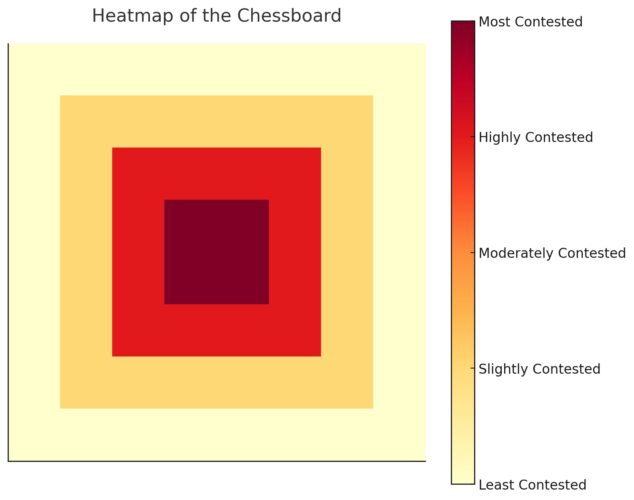
Tactics for Capturing the Opponent’s Pieces
Eliminating your opponent’s pieces reduces their offensive and defensive capabilities. Key tactics include:
- Pins: Holding an enemy piece in place, preventing it from moving without exposing a more valuable piece to capture.
- Forks: Using a single piece, like a knight, to attack two or more enemy pieces simultaneously.
- Skewers: Threatening a valuable piece, forcing it to move and exposing a less valuable piece behind it.
Strategies to Force the Opponent to Resign
At times, the game’s momentum can push an opponent to concede before checkmate:
- Material Advantage: Amassing a significant lead in captured pieces can demoralize an opponent.
- Positional Dominance: Controlling key squares and creating threats can make continuation seem futile for the opponent.
- Time Pressure: In timed games, putting the opponent under consistent pressure can lead them to make mistakes or even run out of time. Understanding how to use the analog clock in chess can be a strategic advantage.
Understanding Situations: Draw and Stalemate
Chess, with its intricate layers and vast possibilities, does not always culminate in a decisive victory. There are situations where neither player can claim the win, leading to what is known as a draw or stalemate. These scenarios introduce another layer of strategy, challenging players to recognize and sometimes even leverage them to their advantage.
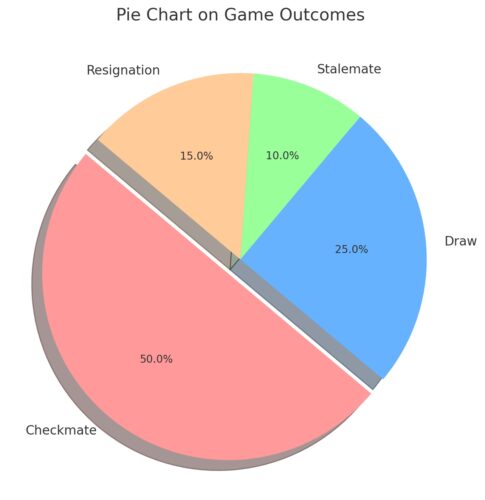
What Constitutes a Draw or Stalemate in Chess
While “checkmate” is a term most are familiar with, the concepts of “draw” and “stalemate” are equally pivotal in the realm of chess:
- Stalemate: Occurs when a player, on their turn, has no legal moves left and their king is not in check. It’s a situation where a player cannot move yet isn’t under direct threat.
- Threefold Repetition: A game can be declared a draw if the same board position occurs three times, with the same player to move each time.
- Fifty-move Rule: A draw can be claimed if fifty consecutive moves have been made by both players without any pawn movement or piece capture.
- Insufficient Material: When neither player possesses enough pieces to deliver checkmate, the game is declared a draw.
How These Situations Impact the Objective of Chess
A draw or stalemate can significantly influence the strategic approach of a game:
- Defensive Strategy: Recognizing an impending loss, a player might navigate the game towards a stalemate, securing a half-point instead of a complete loss.
- Avoiding Repetitions: Players must be wary of inadvertently repeating board positions, lest they unintentionally lead the game to a draw.
- Endgame Implications: Knowledge of situations that lead to draws can shape endgame strategies, especially when players are vying for tournament points.
Rules and Laws of Chess
While chess is celebrated for its strategic depth and intellectual challenge, it’s grounded in a set of precise rules and laws. Adhering to these rules ensures fair play and allows players to craft strategies around a known framework. Familiarity with these laws is not just about avoiding infractions but is pivotal in understanding what the objective of chess truly is.
Overview of Important Rules and Laws Pertaining to the Objectives
- Board Setup: Correctly setting up the board is the foundation of the game. Dive into our guide on how to set up a chess board for a comprehensive overview.
- Movement of Pieces: Each piece has a unique movement pattern. For instance, the knight moves in an ‘L’ shape, a unique characteristic that’s explored in depth here.
- Check and Checkmate: A king in threat of capture is in “check”, and if there’s no legal move to remove that threat, it’s “checkmate”.
- Castling: A special move involving the king and a rook. Understand the nuances of this strategy in our chess castling guide.
- En Passant: A unique pawn capture move that can be explored further here.
- Pawn Promotion: When a pawn reaches the opposite end of the board, it can be promoted to any other piece (except a king).
- Draw Conditions: As previously discussed, there are specific conditions under which a game can end in a draw, a pivotal aspect covered in our basic chess rules.
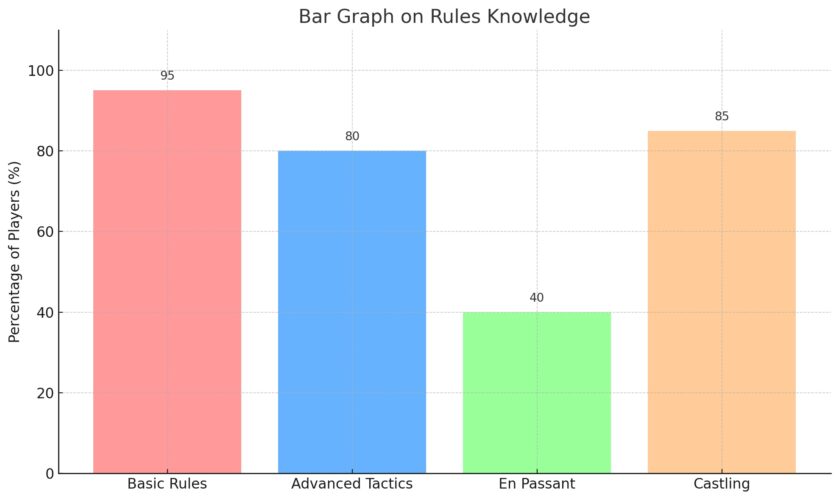
Examples of Moves or Strategies that Correspond with the Laws of Chess
| Rule/Law | Example & Strategy |
|---|---|
| Pawn Movement | Pawns move forward but capture diagonally. In the opening, advancing the central pawns can control the board’s center. |
| Knight’s Unique Move | The knight’s ability to “jump” over pieces allows for tactics like forks, where the knight can attack two pieces simultaneously. |
| Bishop’s Diagonal Move | Using the long diagonals can pin an opponent’s piece to their king, restricting their movement. |
| Castling | This move aids in both king safety and connecting the rooks. Used often in the opening to safeguard the king. |
| En Passant | A surprise tactic, capturing a pawn that has just moved two squares forward from its starting position, bypassing your pawn. |
| Pawn Promotion | Pushing a pawn to the 8th rank can result in a new queen, often turning the tide of an endgame. |
Navigating the vast landscape of chess requires an intricate balance between understanding the foundational rules and crafting strategies around them. It’s this melding of law and strategy that defines the objective of chess, making every game a fresh canvas of possibilities.
Conclusion
Chess, a game deeply anchored in history, is far more than just a pastime; it’s a reflection of strategy, intellect, and human endeavor. With its primary aim centered on checkmate, the game evolves with secondary objectives that add layers of depth and strategy. From the pivotal control of the center to understanding unique moves like en passant and castling, every nuance contributes to the game’s rich tapestry. The draw and stalemate scenarios remind us that not every battle culminates in a clear victory, emphasizing the importance of strategy and foresight.
While grasping the rules and laws of chess, as explored in our basic chess rules guide, is fundamental, truly mastering the game requires an appreciation of its finer points and underlying philosophies. As we reflect on what the objective of chess truly entails, we’re reminded that it’s not just about winning, but about the journey, the lessons, and the endless possibilities that lie across those 64 squares.
FAQ
1. In simple terms, what is the objective of Chess?
- The primary objective of chess is to checkmate your opponent’s king. This means the king is in a position to be captured (in check), and there is no way to move the king out of capture (mate).
2. How is chess played?
- Chess is a board game played between two players that simulates a war between two kingdoms. It is one of the most popular games in the world, played by millions of people.
3. What is the goal in chess puzzles?
- The goal in chess puzzles is to find the best move. It’s not always about achieving checkmate. Sometimes, the objective might be to gain a strategic advantage or even to secure a draw in a challenging position.
4. How does chess benefit its players?
- Chess helps to develop creativity. A person’s personality can often be reflected in their style of play. For instance, a shy and passive person might play more defensively, while an aggressive individual might opt for a more attacking strategy.
5. Are there instances in chess where neither player wins?
- Yes, there are situations in chess known as a “draw,” where neither player wins. There are several conditions under which a chess game can end in a draw, such as stalemate, threefold repetition, and insufficient material.

